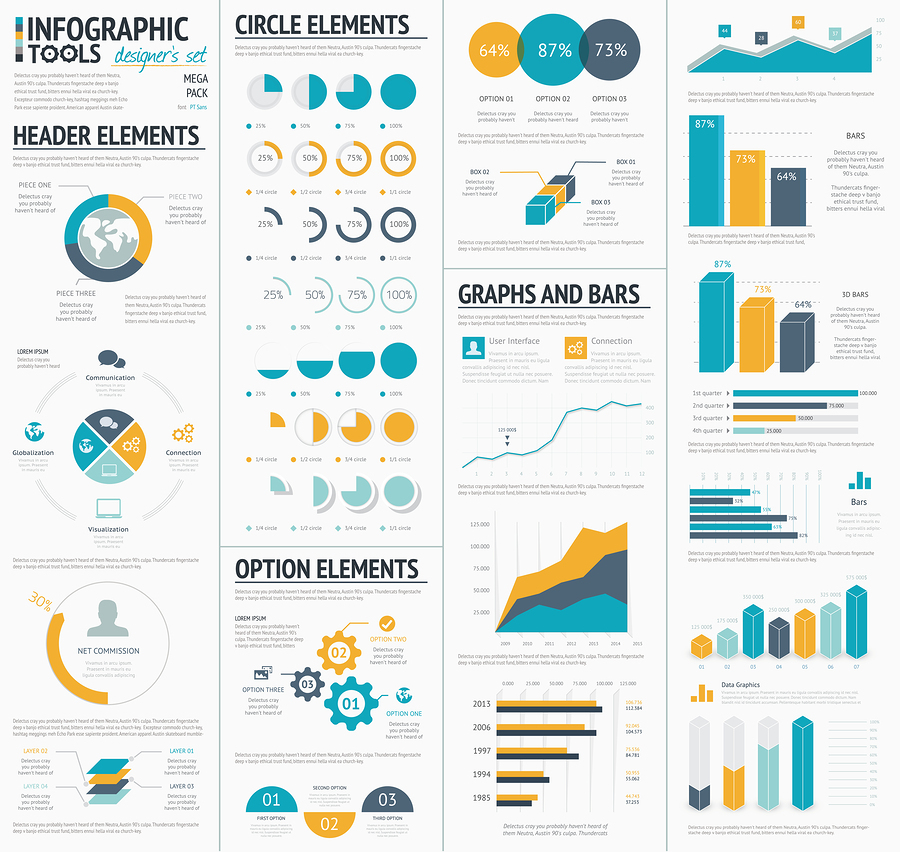.jpg)
Graham Jones is a Visiting Lecturer at the University of Buckingham and an Associate Lecturer at The Open University in the UK. Jones, B.Sc., B.A., Adv.Dip.Ed., MBPsS, M.Ed. M.Sc., is a qualified psychologist, the author of 32 books, and an award-winning writer and speaker, contributing regularly to a wide range of publications and speaking at conferences and events around the world.
When you look around the web, you are bound to see plenty of infographics. Don’t you wonder, how did we all survive before they existed? How come there were no infographics back in the days before the Internet?
There were plenty of ways publications performed data visualization; it is just in the days before the web we called them “charts,” “diagrams,” “images” or “pictures.” Using graphics to convey information is not new. However, what is new is the rise in popularity of such data visualization tools. Why have infographics become so popular in recent years?

Infographics are really popular these days – and there are sound psychological reasons why.
1. It’s how our brains work
The answer to the popularity of infographics lies deep within our brains. In the “olden days” when we could linger over books and reports, looking at charts and diagrams, there was much less information to absorb, and our attention spans were longer. Nowadays, we are constantly presented with new data in vast quantities. This has reduced our ability to pay attention for a long time. When that happens, your brain goes “just give me the essentials–right now.” We demand “instant” information that is quickly and easily absorbed. Enter the infographic.
Our brains are finely tuned to be able to process a vast amount of information in visual form. We can understand information more quickly when it is visual than when it is written out or listed. Hence, in an information-rich world where we are paying little attention to things, infographics provide a psychological answer to the conundrum. When information is presented to us visually, we can get the benefit of information while requiring little time to absorb it.
2. Visual data is more memorable
One significant study of visual memory was conducted by researchers at MIT and Harvard. They found that we were able to recall images easily from thousands of different pictures. First, the psychologists showed people thousands of different images. Then they showed them several hundred pairs of photos. However, in some pairings, there were new pictures that had not previously been shown. The people taking part in the study were able to spot the new images quickly. It appears that when we see something visual we are much more capable of storing it longer-term in our brains. For anyone attempting to get their point across, images are ideal as they are more likely to be remembered.
3. Infographics tell stories
Another reason infographics have become so popular is because they tell stories in a visual way. We relate well to stories as we have been told stories since we were babies – the format of a story is so familiar to us. Digital storytelling–often through infographics–has been shown to be helpful regarding our ability to remember things. As a result, infographics are increasingly being used in education to help students learn, as they make use of both visual and textual modes of learning.
So, infographics have become popular because they help us understand things, help us recall information, and help us absorb the material, which has been increasingly difficult as a result of all the online information that surrounds us. Keeping this in mind, it’s important for site creators to make content that responds to modern modes of thinking. Use infographics on your site to communicate information quickly and effectively, in a way that stands out from the other information out there.




































